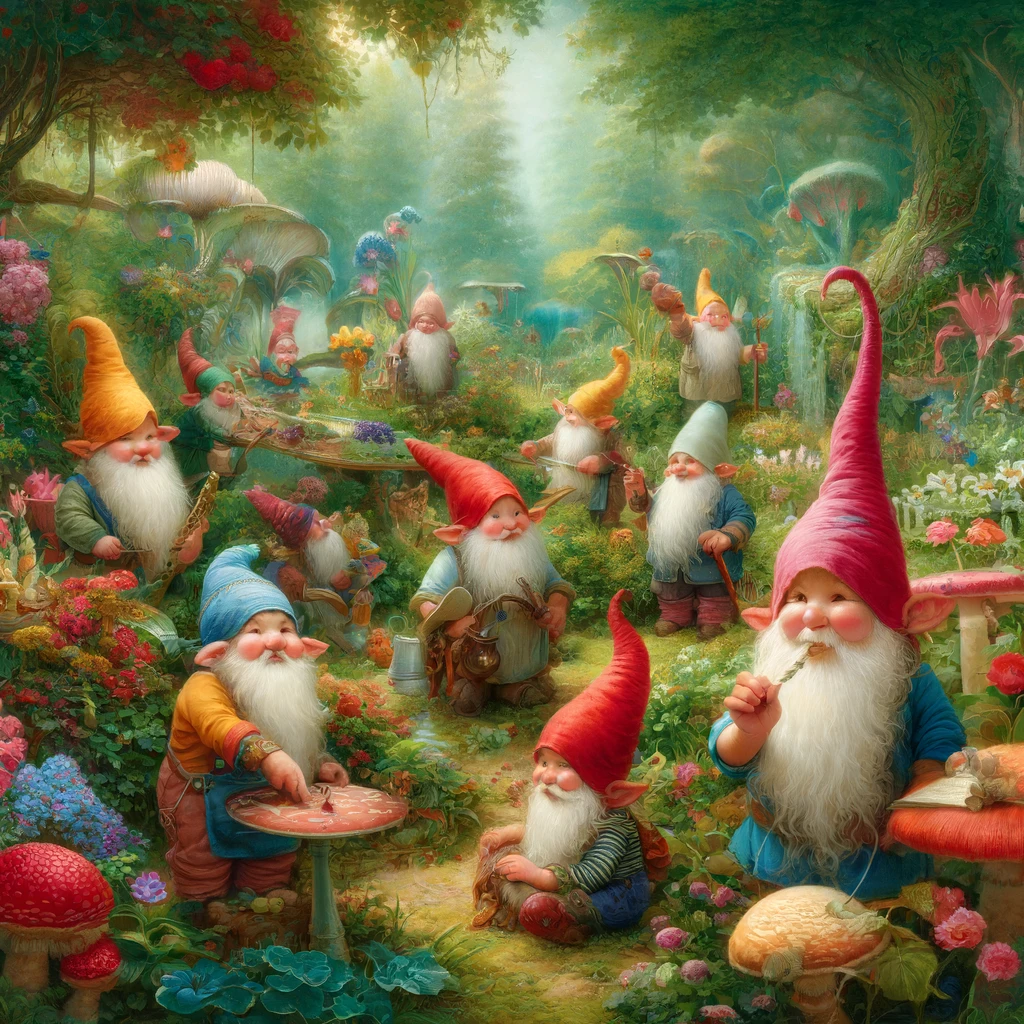Introduction: The Mystical Appeal of Gnomes
Gnomes have captivated our imagination for centuries, appearing in folklore, gardens, and popular culture around the world. These mythical creatures are more than just quaint figurines; they carry a rich history steeped in myth and magic. But what are the origins of gnomes, and why do they continue to enchant us?
The Origins of Gnomes in Folklore
Gnomes have their roots deep in European folklore, often depicted as small, earth-dwelling beings with a profound connection to the natural world. They were believed to guard underground treasures and ensure the fertility of the earth.
Gnomes in Literature and Popular Culture
Over time, gnomes have transitioned from folklore to become beloved characters in literature and movies. They symbolize a bridge between the mystical world and our own, often portrayed as guardians of the environment.
The Symbolism of Garden Gnomes
Garden gnomes, with their colorful hats and beards, are not just decorations but symbols of good luck and protection. They add a touch of magic to our gardens, reminding us of the wonder of nature.
How Gnomes Capture the Modern Imagination
Today, gnomes continue to be a popular subject in books, movies, and even video games. Their enduring appeal lies in their mysterious origins and the playful yet protective nature that they represent.
Gnomes and Their Connection to Nature
Gnomes are considered protectors of the earth, embodying the spirit of nature. Their lore emphasizes a deep respect for the environment and the interconnectedness of all living things.
FAQs About Gnomes
What is the historical significance of gnomes?
Historically, gnomes are deeply rooted in European folklore, particularly in Scandinavian and Germanic traditions. They were believed to be earth-dwelling creatures who guarded treasures buried underground and were seen as protectors of the earth’s minerals and gems. Gnomes were also thought to influence the fertility of the land, making them revered among farmers and gardeners. Their depiction as small, bearded, and often elderly figures wearing pointed hats has become a symbol of wisdom and guardianship over the natural world.
How do garden gnomes differ from their folklore counterparts?
Garden gnomes, as we know them today, are a relatively modern invention, first popularized in the 19th century in Germany and quickly spreading across Europe. While folklore gnomes are often described as shy and reclusive beings with magical powers to protect or heal the earth, garden gnomes are more whimsical and decorative. These statuettes often depict gnomes in various poses and outfits, sometimes engaging in playful or mischievous activities. The primary difference lies in their function; while folklore gnomes have a more mystical and protective role, garden gnomes serve as ornamental figures meant to bring good luck and charm to one’s garden.
In what ways do gnomes appear in modern media?
In modern media, gnomes have been featured in various forms, from books and movies to video games and animated series. They are often portrayed as characters that add a magical or fantasy element to the story. For example, gnomes appear as wise beings offering guidance or assistance in fantasy novels, as comical side characters in animated movies, or as playable characters in video games where they exhibit skills in magic or craftsmanship. The portrayal of gnomes in modern media varies widely, showcasing them as everything from heroic to mischievous, but always keeping a connection to their mythical and magical roots.
What do gnomes symbolize in different cultures?
In different cultures, gnomes symbolize a variety of things but are most commonly associated with protection, good luck, and the guardianship of the earth and nature. In Scandinavian folklore, for example, gnomes (or “tomte” in Swedish) are seen as protectors of the farmstead, looking after animals and the wellbeing of the household. In other cultures, gnomes are considered symbols of fertility and prosperity, ensuring good harvests and wealth from the earth. The common thread across these beliefs is the gnome’s close connection to the earth and its capacity to bring fortune and protection to those who respect and honor their presence.
How have perceptions of gnomes evolved over time?
Over time, the perception of gnomes has evolved from their origins in folklore as secretive and protective spirits of the earth to more commercial and popular culture representations. Initially revered and sometimes feared for their mystical powers and connection to the earth, gnomes have become more endearing and whimsical figures through their depiction in garden statuettes and in media. This transformation has led to a broader acceptance and love for gnomes as charming and whimsical characters, distancing themselves from the more solemn and mystical aura they once held. Despite this evolution, gnomes have retained their status as symbols of good luck and guardians of nature, bridging their historical significance with modern-day appeal.
Conclusion: The Timeless Charm of Gnomes
Gnomes continue to fascinate us with their mystery and charm. Whether in our gardens or in our stories, they remind us of the magic that exists just beneath the surface of the everyday world.

